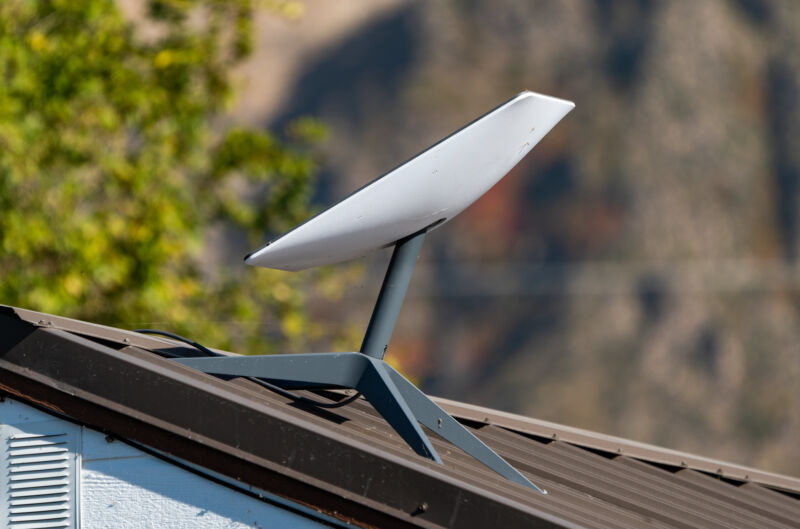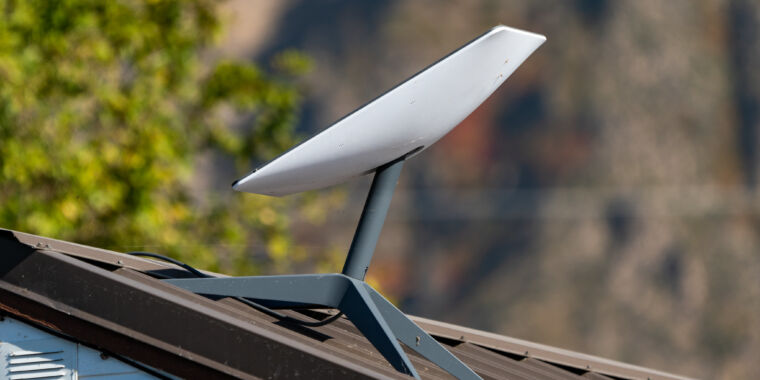
Starlink Internet speeds are continuing to drop as more people use the service, new speed tests show. But SpaceX this week won approval to launch another 7,500 satellites, kicking off a second-generation deployment that will provide the broadband network more capacity in the long run.
SpaceX has been seeking permission to launch another 29,988 low-Earth orbit satellites, and the Federal Communications Commission partially granted the request in an authorization order released Thursday. “Specifically, we grant SpaceX authority to construct, deploy, and operate up to 7,500 satellites operating at altitudes of 525, 530, and 535 km and inclinations of 53, 43, and 33 degrees, respectively, using frequencies in the Ku- and Ka-band,” the FCC said.
The FCC deferred action on the rest of the requested satellites. “To address concerns about orbital debris and space safety, we limit this grant to 7,500 satellites only, operating at certain altitudes,” the FCC said. But the approval of 7,500 satellites “will allow SpaceX to begin deployment of Gen2 Starlink, which will bring next generation satellite broadband to Americans nationwide, including those living and working in areas traditionally unserved or underserved by terrestrial systems,” the FCC said.
The partial authorization came as Ookla speed tests showed Starlink speeds dropping again in Q3 2022. The service’s median download speed in the US is about half what it was at the end of 2021.
Starlink’s median US download speed hit 105Mbps in Q4 2021. It dropped to 90.6Mbps in Q1 2022, 62.5Mbps in Q2 2022, and 53Mbps in the Q3 2022 report released on Wednesday of this week.
Starlink’s median US upload speed dropped from 12Mbps to 7.2Mbps from Q4 2021 to Q3 2022. Median latency rose from 40 ms to 67 ms in the same timeframe.
Starlink gets slower in Canada, too
In Canada, Starlink’s Q3 2022 median download speeds were 65.8Mbps, upload speeds were 9.2Mbps, and latency was 77 ms. Those are all downgrades since Q4 2021, when Starlink’s Canadian users got median download speeds of 106.6Mbps, uploads of 12.8Mbps, and latency of 55 ms.
“Over the past year, as we’ve seen more users flock to sign up for Starlink (reaching 400,000 users worldwide during Q2 2022), speeds have started to decrease,” the latest Ookla report said. But Starlink can still be “a life-changing service for consumers where connectivity is inadequate or nonexistent.”
With Starlink’s current performance, the biggest problems would affect users of multiplayer online games because Starlink “latency still lags far behind low-latency fixed broadband connections,” the report said. We previously wrote about Starlink’s slowing speeds in September. At the time, Ookla said that “Starlink speeds decreased in every country we surveyed over the past year as more users sign up for service.”
Ookla’s user-initiated speed tests show growing numbers of Starlink users across the US. A year ago, Starlink had at least 10 unique users in 776 US counties—now it’s up to at least 10 users in 2,399 counties, about 75 percent of the counties in the US.








